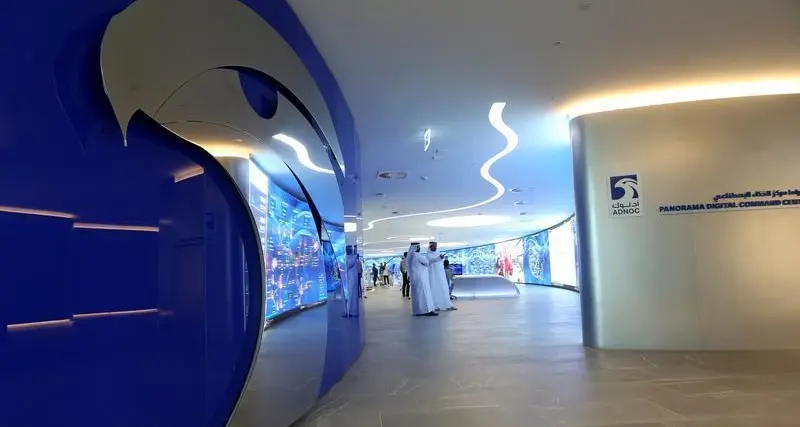PHOTO
- Most cybercriminals are detected at the server (37 percent) or on the network (37 percent); 17 percent are found on endpoints and 10 percent are found on mobile devices
- One-fifth of IT managers admitted not knowing how their most significant attack got in, or for how long it was there before it was detected
- On average, organizations that investigate one or more potential security incidents each month spend 48 days a year (four days a month) investigating them
Dubai: Sophos (LSE: SOPH), a global leader in network and endpoint security, today announced the findings of its global survey, 7 Uncomfortable Truths of Endpoint Security, which reveals that IT managers are more likely to catch cybercriminals on their organization’s servers and networks than anywhere else. In fact, IT managers discovered 37 percent of their most significant cyberattacks on their organization’s servers and 37 percent on its networks. Only 17 percent were discovered on endpoints and 10 percent were found on mobile devices. The survey polled more than 3,100 IT decision makers from mid-sized businesses in 12 countries including the US, Canada, Mexico, Colombia, Brazil, UK, France, Germany, Australia, Japan, India, and South Africa.
“Servers store financial, employee, proprietary, and other sensitive data, and with stricter laws like GDPR that require organizations to report data breaches, server security stakes are at an all-time high. It makes sense that IT managers are focused on protecting business-critical servers and stopping attackers from getting on the network in the first place and this leads to more cybercriminal detections in these two areas,” said Chester Wisniewski, principal research scientist, Sophos. “However, IT managers can’t ignore endpoints because most cyberattacks start there, yet a higher than expected amount of IT managers still can’t identify how threats are getting into the system and when.”
Twenty percent of IT managers who were victim to one or more cyberattacks last year can’t pinpoint how the attackers gained entry, and 17 percent don’t know how long the threat was in the environment before it was detected, according to the survey. To improve this lack of visibility, IT managers need endpoint detection and response (EDR) technology that exposes threat starting points and the digital footprints of attackers moving laterally through a network.
“If IT managers don’t know the origin or movement of an attack, then they can’t minimize risk and interrupt the attack chain to prevent further infiltration,” said Wisniewski. “EDR helps IT managers identify risk and put a process in place for organizations at both ends of the security maturity model. If IT is more focused on detection, EDR can more quickly find, block and remediate; if IT is still building up a security foundation, EDR is an integral piece that provides much needed threat intelligence.”
On average, organizations that investigate one or more potential security incidents each month spend 48 days a year (four days a month) investigating them, according to the survey. It comes as no surprise that IT managers ranked identification of suspicious events (27 percent), alert management (18 percent) and prioritization of suspicious events (13 percent) as the top three features they need from EDR solutions to reduce the time taken to identify and respond to security alerts.
“Most spray and pray cyberattacks can be stopped within seconds at the endpoints without causing alarm. Persistent attackers, including those executing targeted ransomware like SamSam, take the time they need to breach a system by finding poorly chosen, guessable passwords on remotely assessible systems (RDP, VNC, VPN, etc.), establish a foothold and quietly move around until the damage is done,” said Wisniewski. “If IT managers have defense-in-depth with EDR, they can also investigate an incident more quickly and use the resulting threat intelligence to help find the same infection across an estate. Once cybercriminals know certain types of attacks work, they typically replicate them within organizations. Uncovering and blocking attack patterns would help reduce the number of days IT managers spend investigating potential incidents.”
Fifty-seven percent of respondents said they were planning to implement an EDR solution within the next 12 months. Having EDR also helps address a skills gap. Eighty percent of IT managers wish they had a stronger team in place, according to the survey. More information is available in the 7 Uncomfortable Truths of Endpoint Security PDF and on Sophos News.
The 7 Uncomfortable Truths of Endpoint Security survey was conducted by Vanson Bourne, an independent specialist in market research, in December 2018 and January 2019. This survey interviewed 3,100 IT decision makers in 12 countries and across six continents, in the US, Canada, Mexico, Colombia, Brazil, UK, France, Germany, Australia, Japan, India, and South Africa. All respondents were from organizations with between 100 and 5,000 employees.
-Ends-
Read the latest security news and views on our award-winning news website Naked Security and read more about Sophos on Sophos News.
Protect every Mac and PC in your home with the next generation of centrally managed cybersecurity software, Sophos Home.
About Sophos
Sophos is a leader in next-generation endpoint and network security. As the pioneer of synchronized security, Sophos develops its innovative portfolio of endpoint, network, encryption, web, email and mobile security solutions to work better together. More than 100 million users in 150 countries rely on Sophos solutions as the best protection against sophisticated threats and data loss. Sophos products are exclusively available through a global channel of more than 26,000 registered partners. Headquartered in Oxford, UK, Sophos is publicly traded on the London Stock Exchange under the symbol "SOPH." More information is available at www.sophos.com.
Disclaimer: The contents of this press release was provided from an external third party provider. This website is not responsible for, and does not control, such external content. This content is provided on an “as is” and “as available” basis and has not been edited in any way. Neither this website nor our affiliates guarantee the accuracy of or endorse the views or opinions expressed in this press release.
The press release is provided for informational purposes only. The content does not provide tax, legal or investment advice or opinion regarding the suitability, value or profitability of any particular security, portfolio or investment strategy. Neither this website nor our affiliates shall be liable for any errors or inaccuracies in the content, or for any actions taken by you in reliance thereon. You expressly agree that your use of the information within this article is at your sole risk.
To the fullest extent permitted by applicable law, this website, its parent company, its subsidiaries, its affiliates and the respective shareholders, directors, officers, employees, agents, advertisers, content providers and licensors will not be liable (jointly or severally) to you for any direct, indirect, consequential, special, incidental, punitive or exemplary damages, including without limitation, lost profits, lost savings and lost revenues, whether in negligence, tort, contract or any other theory of liability, even if the parties have been advised of the possibility or could have foreseen any such damages.











